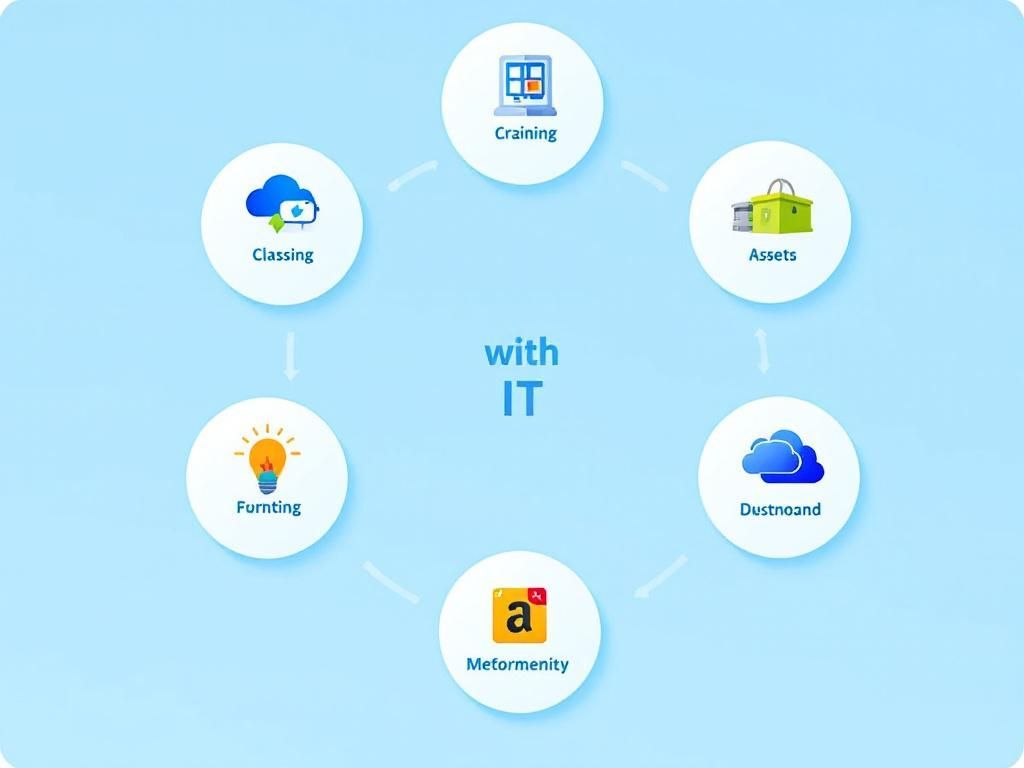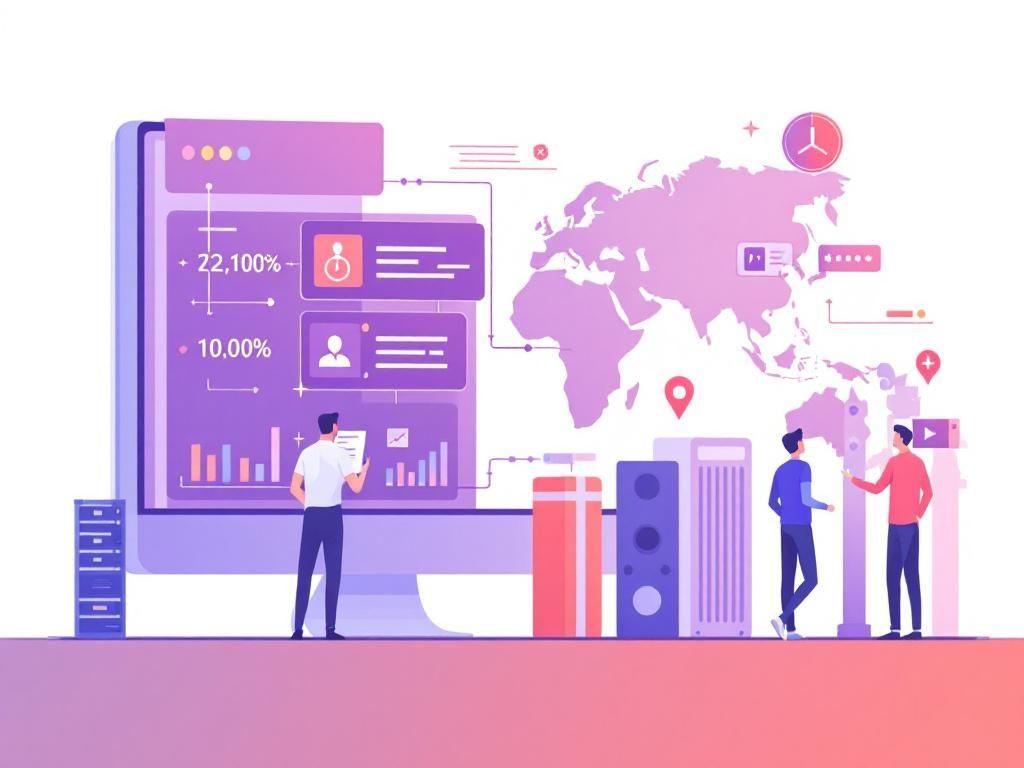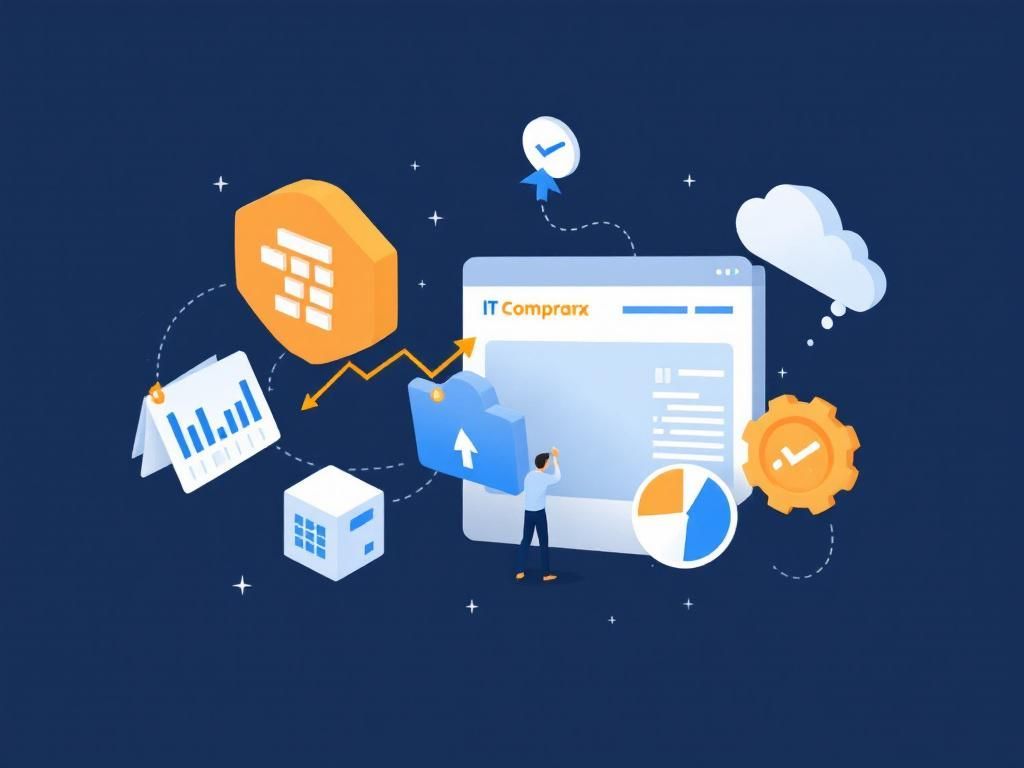Ultimate 2025 Guide to IT Process Optimization
Discover essential strategies and best practices for optimizing IT processes in 2025 to enhance efficiency and productivity.

Table of Contents
2025 Guide to IT Process Optimization
In today’s fast-paced technology environment, organizations are constantly seeking ways to enhance productivity, reduce costs, and improve service delivery. IT process optimization is a strategic approach that allows businesses to streamline their operations, eliminate waste, and improve overall performance. This guide will explore key concepts, methodologies, and tools for IT process optimization as we head into 2025.
Understanding IT Process Optimization
IT process optimization involves analyzing and improving existing IT processes to achieve better efficiency, effectiveness, and quality of service. It encompasses a variety of practices and methodologies that aim to minimize unnecessary steps, reduce bottlenecks, and improve resource allocation.
Importance of IT Process Optimization
The significance of IT process optimization cannot be overstated. Here are several reasons why organizations should prioritize this initiative:
- Increased Efficiency: Streamlining processes leads to faster task completion and less downtime.
- Cost Reduction: Identifying and eliminating wasteful practices can significantly lower operational costs.
- Improved Quality: Well-optimized processes result in fewer errors and better service delivery.
- Enhanced Employee Satisfaction: By reducing repetitive tasks, employees can focus on more strategic work.
- Better Compliance: Optimized processes help ensure adherence to regulatory standards.
Key Methodologies for IT Process Optimization
Several proven methodologies can guide organizations in their optimization efforts:
1. Lean IT
Lean IT focuses on eliminating waste within IT processes. By identifying non-value-adding activities and streamlining workflows, organizations can enhance their service delivery while maintaining high-quality standards.
2. Six Sigma
Six Sigma aims to reduce process variation and improve quality by identifying and removing the causes of defects. This data-driven approach uses statistical methods to achieve near-perfect processes.
3. ITIL (Information Technology Infrastructure Library)
ITIL provides a framework for aligning IT services with business needs. It emphasizes continuous improvement and helps organizations optimize their IT service management processes.
4. Agile
The Agile methodology promotes flexibility and collaboration in project management. By employing iterative processes and continuous feedback, organizations can optimize their IT projects to be more responsive to change.
Steps to Optimize IT Processes
To effectively optimize IT processes, organizations can follow a systematic approach:
Step 1: Assess Current Processes
Begin by mapping out existing IT processes. Identify the inputs, outputs, and stakeholders involved. This assessment helps in understanding the current state and pinpointing areas for improvement.
Step 2: Gather Data
Collect quantitative and qualitative data on process performance. Key performance indicators (KPIs) such as cycle time, error rates, and customer satisfaction scores can provide valuable insights.
Step 3: Identify Bottlenecks
Analyze the data to identify bottlenecks or inefficiencies that hinder process performance. Use tools such as flowcharts and value stream mapping to visualize the process and highlight problem areas.
Step 4: Implement Improvements
Based on the insights gained, develop a plan for process improvements. This may include re-engineering workflows, automating tasks, or implementing new technologies.
Step 5: Monitor and Adjust
After implementing changes, continuously monitor process performance. Regularly review KPIs and solicit feedback from stakeholders to ensure that the improvements meet desired outcomes.
Tools for IT Process Optimization
Numerous tools can assist organizations in their IT process optimization efforts. Here are some popular ones:
| Tool | Description | Use Case |
|---|---|---|
| Asana | A project management tool that helps teams collaborate and track progress. | Managing IT projects and tasks efficiently. |
| JIRA | An issue tracking and agile project management tool. | Facilitating Agile methodologies and tracking software development processes. |
| Trello | A visual collaboration tool that organizes tasks into boards. | Streamlining workflow and task management. |
| ServiceNow | A platform for IT service management (ITSM) that automates service processes. | Improving service delivery and incident management. |
| Microsoft Power BI | A business analytics tool that provides interactive visualizations and business intelligence. | Analyzing process data and generating insights. |
Best Practices for IT Process Optimization
To enhance the effectiveness of your IT process optimization initiatives, consider the following best practices:
- Involve Stakeholders: Engage employees, customers, and other stakeholders in the optimization process to gather diverse perspectives and insights.
- Focus on Customer Value: Ensure that optimization efforts align with delivering value to customers and meeting their needs.
- Document Processes: Maintain comprehensive documentation of processes and changes to facilitate knowledge transfer and training.
- Emphasize Continuous Improvement: Adopt a culture of continuous improvement where teams regularly review and refine processes.
- Leverage Technology: Utilize automation and advanced analytics to enhance process efficiency and decision-making.
Challenges in IT Process Optimization
While there are many benefits to optimizing IT processes, organizations may face several challenges:
Resistance to Change
Employees may be resistant to changes in established processes. Effective communication and training are critical to addressing this resistance.
Insufficient Data
Without accurate and comprehensive data, organizations may struggle to identify inefficiencies and measure improvements.
Complexity of Systems
The interconnectedness of IT systems can complicate optimization efforts, requiring a holistic view and integrated solutions.
Maintaining Quality During Change
Organizations must balance the urgency to optimize with the need to maintain service quality. This requires careful planning and execution.
Conclusion
As we move toward 2025, IT process optimization will become increasingly vital for organizations aiming to remain competitive in the digital landscape. By understanding key methodologies, implementing systematic optimization steps, and leveraging the right tools, businesses can achieve significant enhancements in efficiency, quality, and customer satisfaction. Embracing a culture of continuous improvement will ensure that organizations not only optimize their current processes but also remain agile and responsive to future challenges.
FAQ
What is IT process optimization?
IT process optimization refers to the systematic approach of improving IT processes to enhance efficiency, reduce costs, and increase service quality.
Why is IT process optimization important for businesses?
IT process optimization is crucial for businesses as it helps streamline operations, improves productivity, and ensures better alignment between IT services and business objectives.
What are the key steps in IT process optimization?
The key steps in IT process optimization include assessing current processes, identifying inefficiencies, implementing improvements, and continuously monitoring performance.
How can automation aid in IT process optimization?
Automation can significantly aid in IT process optimization by reducing manual tasks, minimizing errors, and speeding up workflows, thereby freeing up resources for more strategic initiatives.
What tools are available for IT process optimization?
There are several tools available for IT process optimization, including workflow management software, monitoring tools, and IT service management (ITSM) solutions that help streamline processes and enhance visibility.
How often should businesses review their IT processes for optimization?
Businesses should review their IT processes for optimization regularly, ideally at least once a year, or whenever significant changes in technology or business objectives occur.








